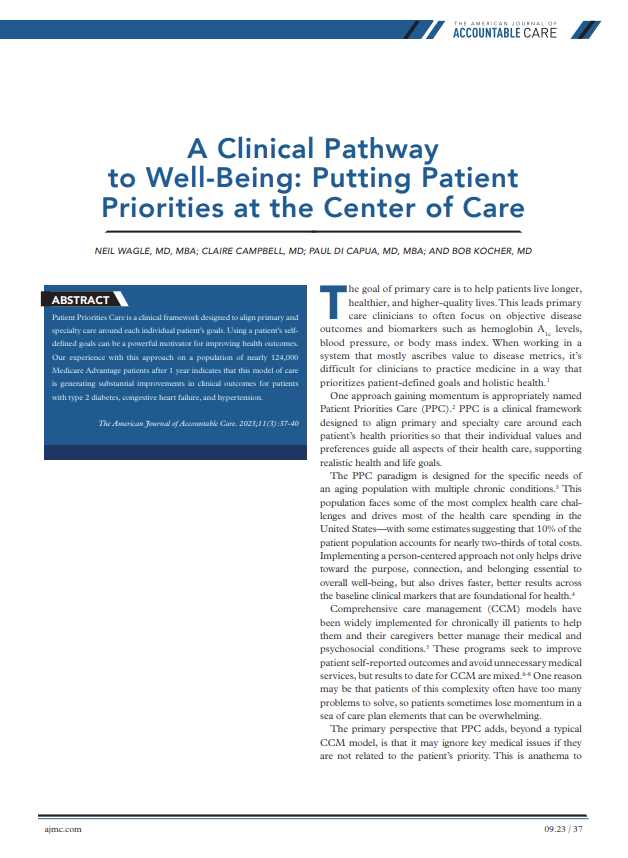Headline
A care management model designed to center patients’ health priorities shows promising results.
Context
Individualized approaches to care that center patients’ goals have long been recognized as effective ways to sustain patient motivation and engagement in care when navigating complex health and social needs. One example of this approach is the Patients Priorities Care (PPC) model for comprehensive care management, which offers “a clinical framework that aligns primary and specialty care around each patient’s health priorities.” Specifically designed to meet the unique needs of older adults with multiple chronic conditions, PPC addresses the limitations of traditional care management approaches that may be overwhelming or otherwise ineffective for this population. At the core of PPC is the identification of “The One Thing” for each patient, serving as the guiding principle for all care decisions. Devoted Medical, an in-house medical group serving members enrolled in Devoted Health’s Medicare Advantage plans, recently adopted PPC as part of its care strategy.
Findings
Devoted Medical’s implementation of the PPC model yielded promising early results, including reductions in patients’ hemoglobin A1C, blood pressure, congestive heart failure-related acute events, and medical costs. This article also highlights additional implementation details, including the role played by community health workers (CHWs) in identifying patients’ health goals, as well as modifications made to electronic health record workflows to enable team-based approaches to tracking patient priorities.
Takeaways
PPC offers a promising framework to balance the dual goals of providing care that is both person-centered, while also being comprehensive in its response to complex health and social needs. The authors note that PPC may lead to greater overall costs of care given the time and resource intensity of the model, but that leveraging lower-cost resources like CHWs in a team-based approach can help to mitigate these costs.

